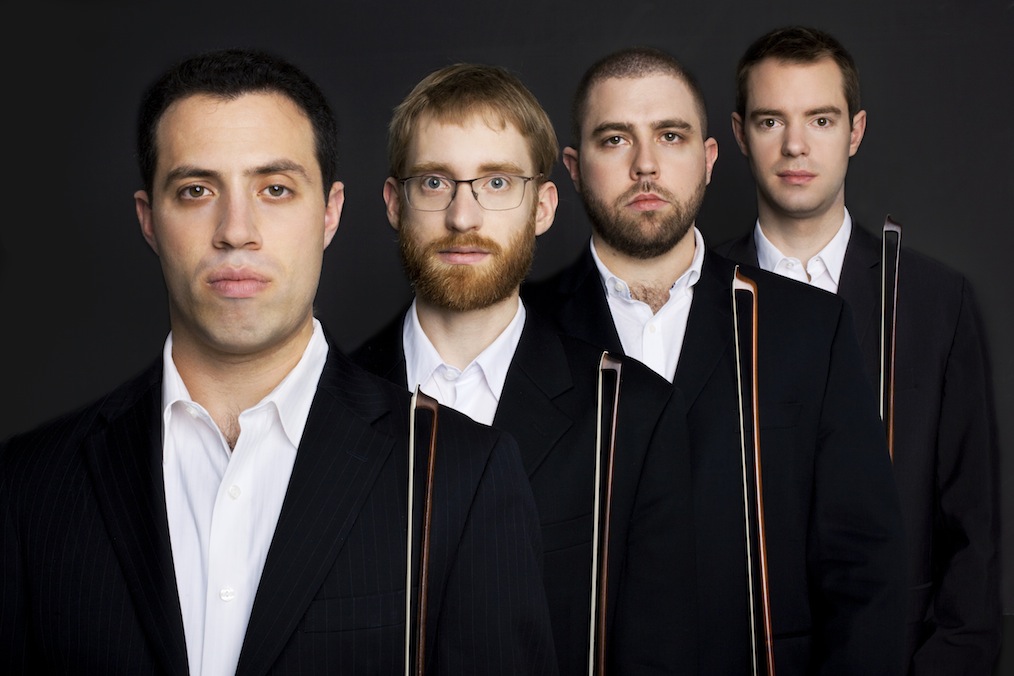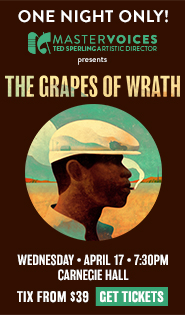JACK Quartet makes the abstract absorbing at Roulette
Partway through JACK Quartet’s Friday night concert at Roulette, something unusual occurred; the group was playing with a rich vibrato.
JACK plays an amazingly broad and deep repertoire of new and contemporary music, and in the classical world that tends to typecast them as specialist. What they are, accurately, is one of the finest string quartets, playing music that is part of the ongoing tradition of classical composition. 200 years ago, their repertory would have been Haydn and Beethoven, 100 years ago Bartók and Webern. Friday, it was Elliot Carter, a world premiere from David Liptak, and recent pieces from Amy Williams and Andrew Greenwald.
The vibrato, which was lovely, came in the third movement of Liptak’s excellent String Quartet No. 3. After hearing JACK for years produce gripping sounds in the avant-garde compositions of the likes of Helmut Lachenmann and Horatiu Radulescu, it was a charming and slightly bewildering revelation to hear how they sound playing minor chords. And JACK sounded wonderful.
As did Liptak’s piece, a contemporary statement on the history of the string quartet, in four movements. The style is expressionistic, with direct roots in Bartók, Dutilleux and, it seemed, in the moody, quasi-romantic modernism of André Boucourechliev. The tonality is minor key, and there is a velvety darkness covering a fiery intensity. One hundred years ago, music like this would have come to some sort of narrative conclusion. Liptak’s quartet, with its agitated final movement and finely structured coda, ends with the question mark of a quiet pizzicato.
Preceding this, in the first half, was Williams’ Richter Variations, inspired by the paintings of Gerhard Richter. As difficult as it is for the temporal dimension of music to represent the still, flat surface of a canvas, Williams gauzy harmonics and floating chords capture some of the visual sensations of Richter’s fuzzy representations and smeary, horizontal abstractions. JACK brought a sonic richness to the music, which stands on its own as a series of attractive miniatures.
After intermission, Greenwald’s A thing is a hole in a thing it is not brought the group back into more familiar territory. This is one of a series of pieces with the same title that Greenwald has written, using graphic notation that indicates bowing method, a proportional sense of tempo and rhythm, indeterminate pitch, and with an open structure (the title is a quotation from sculptor Carl Andre). This is the kind of music JACK eats for breakfast.
JACK played the piece as a quietly intense, rapid flurry of squeezes and scrapes, unusual bowings and extended techniques, cueing and listening to each other as it went along. There are moments of relative stability, with sustained, whistling harmonics, but the overall sound is like tiny things scurrying though the walls. There’s nothing clichéd or frightening about the piece, though, it is compelling.
The concert concluded with Carter’s daunting String Quartet No. 3, one of the most difficult pieces to play–and hear–from the 20th century. Carter pushed his complex, free polyphony to the extreme by dividing the string quartet into two duos, first violin/cello and second violin/viola, and then giving them entirely different music. The duos are not only not coordinated, they play in different tempos.
Carter’s sound is off-putting to many, but his garrulous vivacity is not hard to apprehend. What makes this quartet such a challenge is that, even for a practiced listener, keeping track of four simultaneous voices playing a free and dissonant tonal and rhythmic counterpoint is daunting. JACK eased this by the simple but highly effective means of setting the two duos apart, at opposite ends of the stage. That separation turned polyphony into antiphony, and the design was much easier to track.
Though they are not synchronized, each duo needs to hear what the other is playing. The best performances understand how the piece build structure out of thin air, like improvisation, and JACK built a fantastic one out of a passage that juxtaposes rapid, aggressive pizzicato in Duo I with sotto voce long tones in Duo II. There was a real confluence of musics at the end, an identifiable climax with a final exclamation point that brought out a sustained ovation from the substantial crowd.
Except for Greenwald, the pieces on the program shared the underlying and enduring romantic value that there was some mix of intellectual, aesthetic and emotional ideas that the composers wanted to communicate. That was clear in the Williams and Liptak’s compositions, but is also true for Carter. The density of his language can give the impression that his quartet is an exercise in how notes relate to each other, but Carter was expressing his thoughts about the world around him. And the value in JACK’s beautiful playing, beyond the pleasure and stimulation, is how they can cut through abstraction with interpretive ideas, and give music on the edge, like A thing, remarkable drama.
The JACK Quartet plays a “Pop-Up Concert” at Miller Theatre 6 p.m. February 24. jackquartet.com



